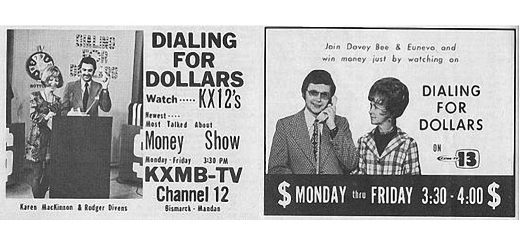Randy McKay – Veteran Trader – Investor Profile

This article is part of our ‘Guru’ series – investor profiles of those who have succeeded in the markets, with takeaways for the private investor in the UK.
You can find the rest of the series here.
Contents
Randy McKay
Randy McKay appears in the second of Jack Schwager’s Market Wizards series – the New Market Wizards. His chapter is called “Veteran trader.”
I can’t find a photo of McKay, so he’s obviously one of those traders who likes to keep a low profile.
- Schwager only heard of him a few months before the interview.
- McKay apparently only took the interview because he wanted to move into money management and needed the publicity.
Previously he had only managed a handful of accounts for friends and family.
At the time of the interview, McKay had a 20-year record of consistent profits – up 18 years out of 20 – taking him from a few thousand to tens of millions of dollars.
- He had one bad year when he switched from floor trading to trading from home, but quickly adjusted.
- His first year of losses came in 1986.
Currency futures
As with so many of the traders in Schwager’s early books, McKay got in early on the currency futures market, back in the 1970s when trading was thin.
- The first part of the interview is concerned with McKay’s time in Vietnam, where he was a Marine.
- The experience changed him from a rule follower to thinking for himself.
When he got back, his brother – a floor broker on the Chicago Mercantile Exchange (CME) – got McKay a job as a runner on the floor, so he could go to night school at the same time.
- At this point, he wanted to be a clinical psychologist.
- In 1972, CME seats were $100K (probably more than $1M today), so being a floor trader seemed impossible.
When currency trading began, seats were sold for $10K, and existing brokers (including McKay’s brother) got free seats.
- McKay was fascinated by the psychology of greed and fear and took his brother’s seat (and $2K in capital).
- But the markets were dead after a few weeks – McKay made about two trades per day.
- Even so, his $2K became $70K after 7 months.
First big trade
His first big trade was the Pound in 1976, after the UK government announced a ceiling of $1.72, to boost exports and reduce imports.
- The UK government announced a ceiling of $1.72, to boost exports and reduce imports.
- The market immediately went from $1.65 to $1.72.
- It fell back a few times, by smaller and smaller amounts, but kept returning to $1.72.
Most traders thought it wouldn’t go above $1.72, but McKay saw a market that was locked limit up.
- He went long 200 contracts, five times his normal size.
- He called the Bank of England every day for a quote, and one morning the quote was $1.725.
- He called his brother and all his friends and bought more contracts.
The market went to $1.90 in four months.
- McKay targeted this level because it was a round number, and it had been a support level on the way down (so was now resistance).
He sold 1400 contracts – 400 for himself and the rest for his friends – over 45 minutes, clearing $1.3M in profit.
- He actually over-sold, pushed the price down and even made money on the extras.
Changing markets
The best thing about this trade was that it pushed him up a league in trading size.
- McKay knew that trading this market was too easy and it couldn’t last.
- Declining inflation in the 1980s led to fewer large market moves and increased choppiness.
- The big moves were down, which excluded retail traders and forced professionals to trade against each other.
By the time of the interview, you not only had to trade with the trend, but you had to pay a lot of attention to entry and exit points.
In the 1970s prognostication was 90% and execution 10%, whereas today prognostication is 25% and execution 75%.
Trading style
McKay watches price action and also how the market responds to fundamentals.
- Shrugging off bad news is bullish.
- Not reacting to positive news is bearish.
He trades lots of markets:
I’ve got thirty-eight markets on my screen. If I miss moves in ten of them, there will be ten others that have a price move.
He tries to catch the “easy part” of the move.
The beginning of a price move is hard to trade because you’re not sure whether you’re right. The end is hard because people start taking profits and the market gets very choppy.
I never try to buy a bottom or sell a top. Even if you manage to pick the bottom, the market can end up sitting there for years and tying up your capital.
He has moved from trading breakouts to swing trading:
I used to like buying or selling on breakouts, but nowadays the breakouts that work look similar to the breakouts that are sucker plays. I now buy on breaks and sell on rallies.
When he first started, McKay found the pain of missing a move worse than being on the wrong side of the market. He’s since trained himself out of this.
You have to be more concerned about the moves you’re in than the moves you’re not in.
Cut your losses
When I get hurt in the market, I get the hell out. It doesn’t matter where the market is trading. Once you’re hurt, your decisions are going to be far less objective.
You must get out of your losses immediately. You have to consider how many potential future winners you might miss because of the effect of a larger loss on your mental attitude and trading size.
As long as you’re in the position, there’s tremendous anxiety. Once you get out, you begin to forget about it. If you can’t put it out of your mind, you can’t trade.
Risk management
My money management techniques are extremely conservative.
An essential element in McKay’s style is a drastic variation in position size.
- When he is doing well, McKay will trade very large.
- When doing badly, he might end up shrinking his trade size by more than a factor of 100.
You have to wait until you get back into the proper frame of mind.
- but the only way you can do that is by winning,
- and you don’t want to bet large in the meantime.
For an initial trade, McKay risks 5% to 10% of his account.
- If that trade goes wrong, he scales back to 4% for the next trade.
- And then to 2% if the second trade goes wrong.
Never let a loser get out of hand. You want to be sure that you can be wrong twenty or thirty times in a row and still have money in your account.
McKay thinks that you need to treat yourself as a trend, too.
Every trader will go through cold spells.
Other quotes
The worst thing that can happen to you is being right and still losing money.
One of the things I did that worked in those early years was analyzing every single trade I made. You need to determine why the winners are winners and the losers are losers.
Virtually every successful trader ultimately ended up with a trading style suited to his personality.
Conclusions
Only investors willing to trade multiple asset classes (in the UK, probably via spread-betting) will be able to make use of McKay’s approach.
- Find a trading style that suits your personality.
- Analyse your trades, so work out the difference between winners and losers.
- Aim for the “meat” of the trend – don’t try to pick tops and bottoms.
- Look for the impact of fundamentals on the price action.
- shrugging off bad news is bullish
- not reacting to positive news is bearish
- Get out when a trade goes against you (cut your losses).
- A big loss will impair your judgement
- Reduce your position size when you are on a losing streak.
- Trade small to get back to a hot streak
- Treat yourself (your trading record) as a trend, too
- Don’t worry about the trades that you aren’t in.
Until next time.

















